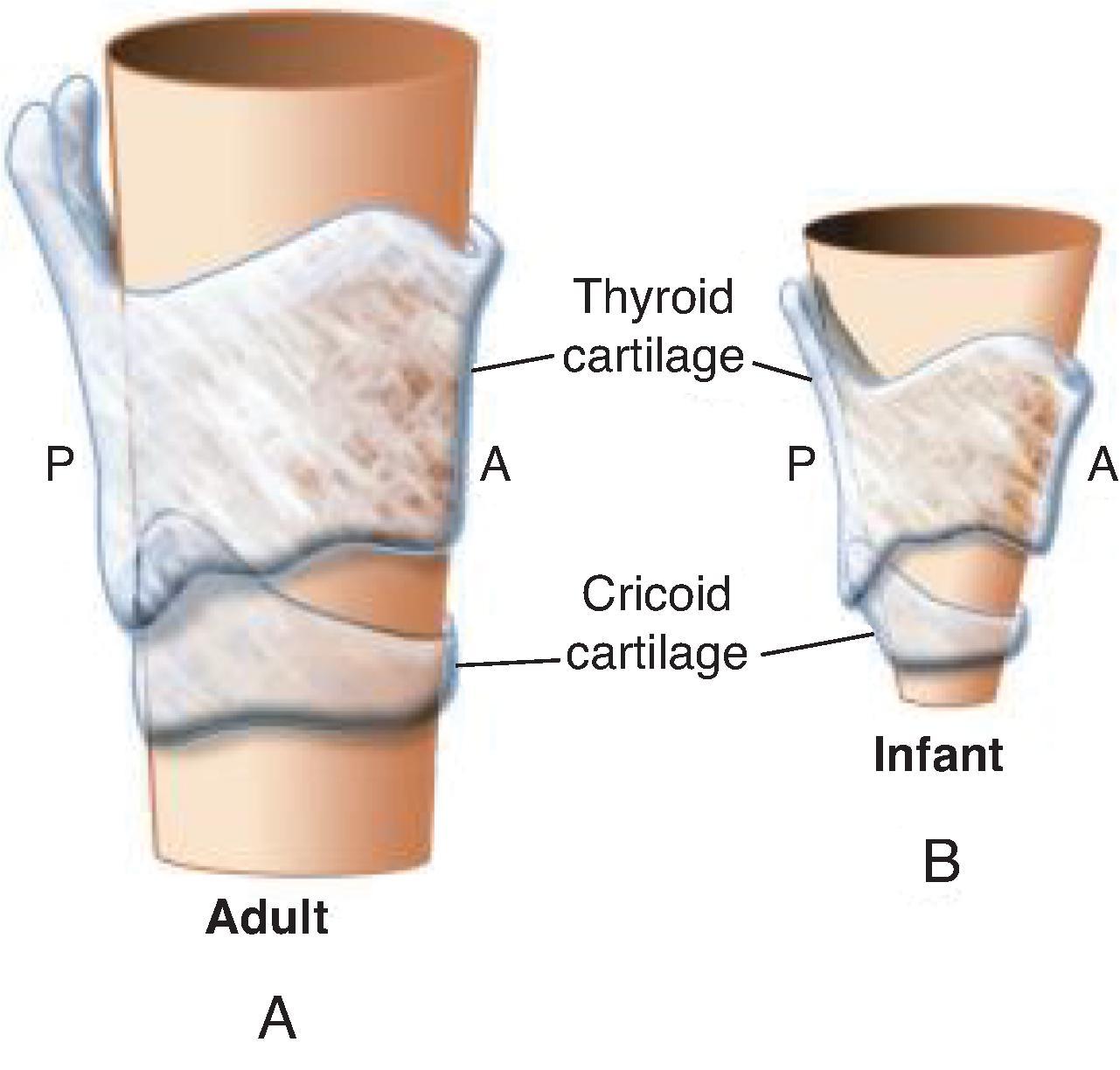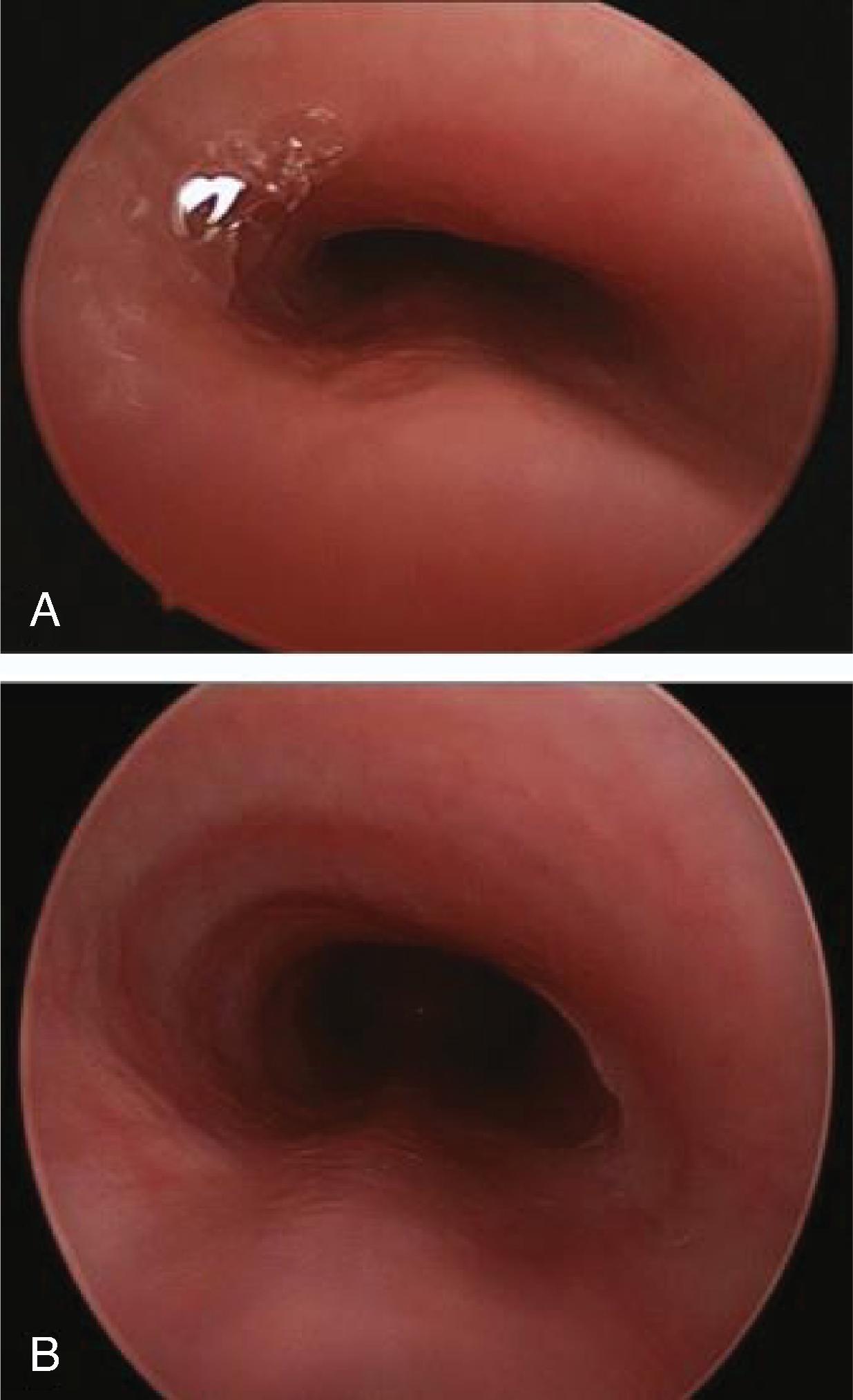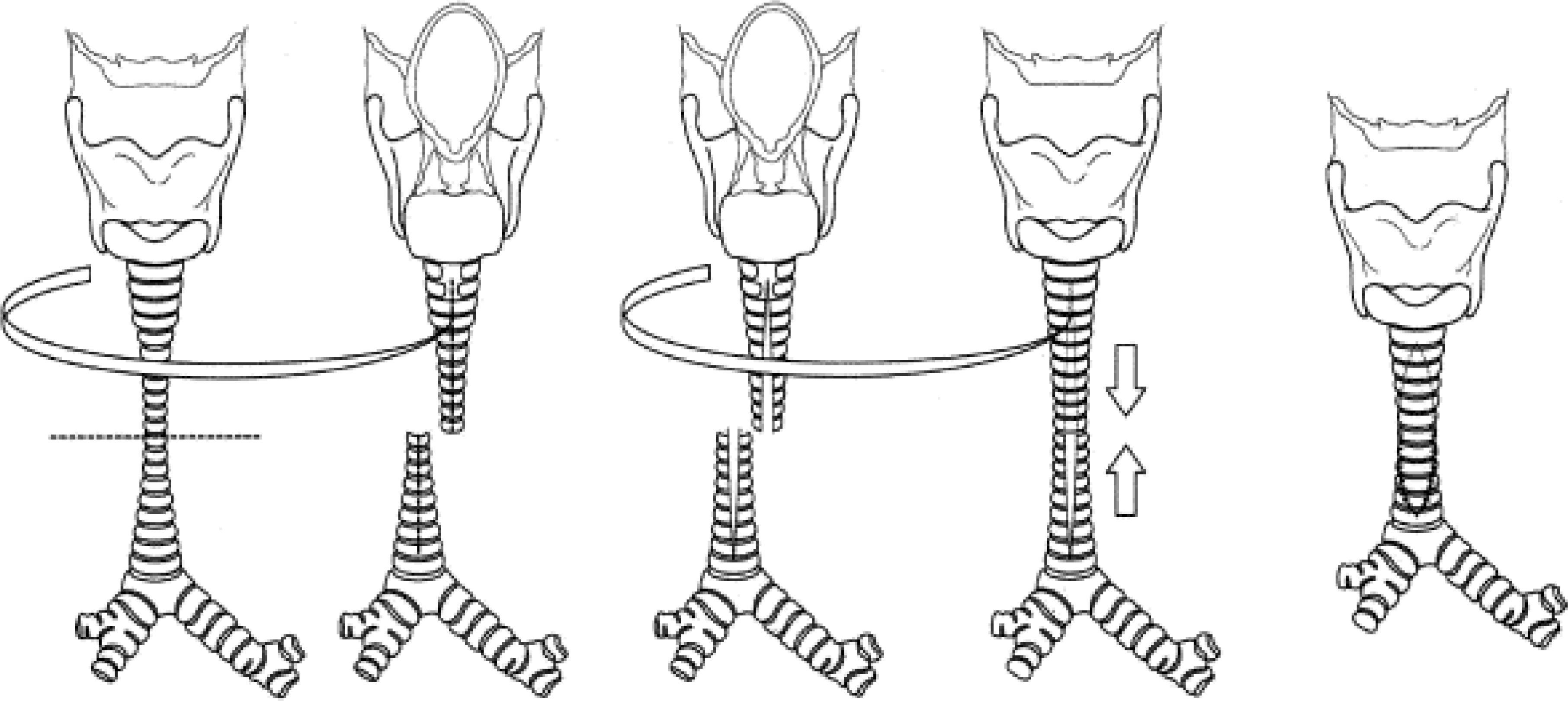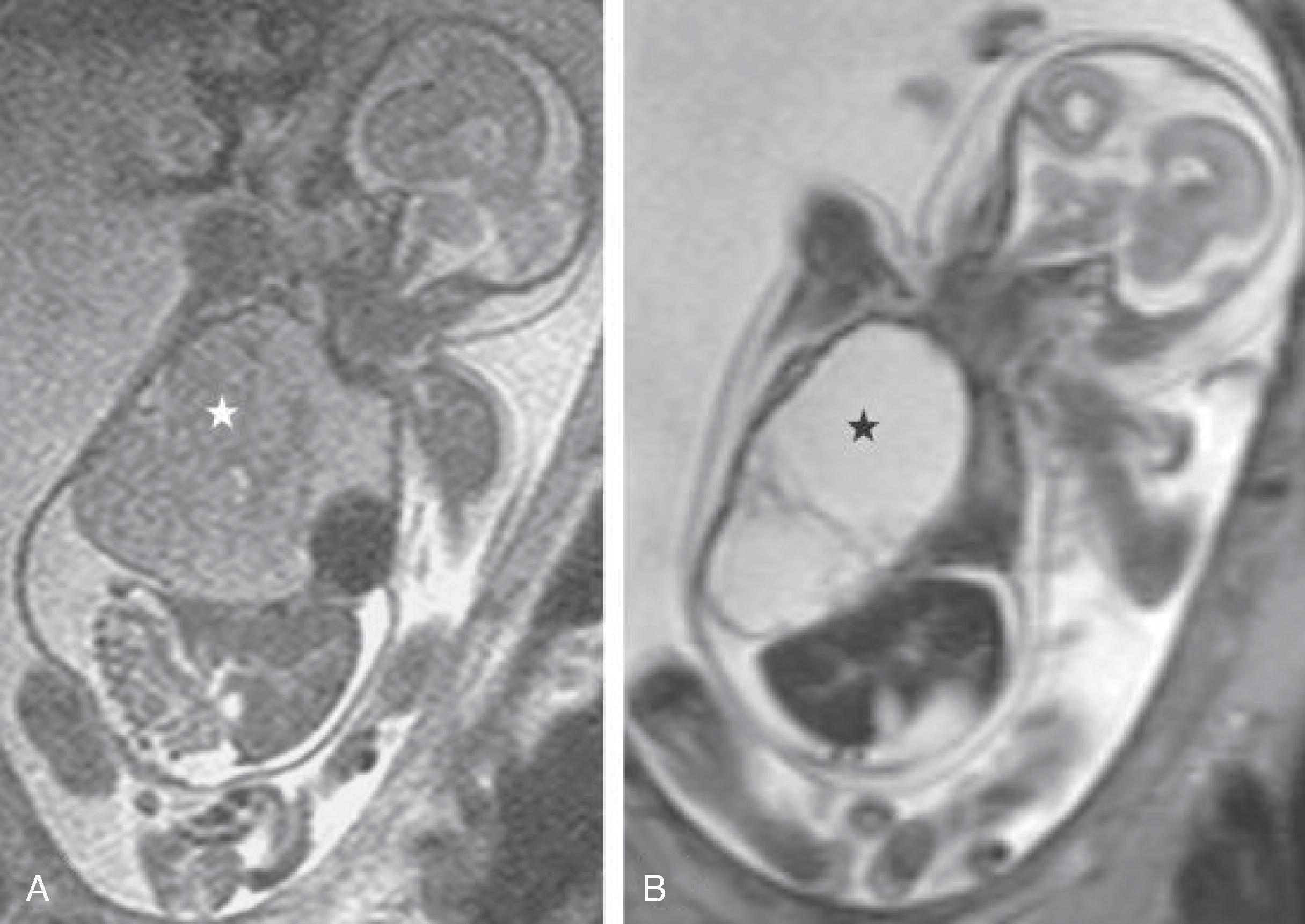Physical Address
304 North Cardinal St.
Dorchester Center, MA 02124
Neonatal respiratory disease that requires surgery can have devastating consequences. Care for patients with these conditions involves a multidisciplinary team including neonatologists, pediatric surgeons, nurses, and respiratory therapists.
These surgical respiratory defects include upper airway stenosis, laryngomalacia and tracheomalacia, congenital lung lesions, and the congenital defects of the diaphragm.
Stridor is the most characteristic finding of upper respiratory obstructions. Acute obstruction may be asymptomatic or present with stridor, tachypnea, fatigue, nasal flaring, cyanosis, drooling, and use of accessory muscles. Chronic obstruction may present as failure to thrive and poor weight gain due to poor coordination between swallowing and breathing.
Laryngomalacia is the most frequently seen congenital laryngeal anomaly and typically presents with stridor. It is characterized by an inward collapse of the supraglottic airway with inspiration. Laryngeal stenosis can occur in the supraglottic or the subglottic regions.
Tracheomalacia is characterized by an increased collapsibility of the trachea. This is caused by structural anomalies of the tracheal cartilage or posterior membrane or by external vascular compression. In congenital tracheal stenosis the trachea is narrow due to complete, abnormal cartilaginous rings that result in stenotic segments.
Abnormalities of the aortic arch and pulmonary vasculature can compress the airway and cause respiratory compromise. Patients present with noisy breathing, barking cough, recurrent respiratory tract infections, and dysphagia and may have episodes of apnea.
Congenital lung lesions are a spectrum of developmental anomalies such as congenital pulmonary airway malformations, bronchopulmonary sequestrations, and congenital lobar emphysema. Other malformations include bronchogenic cysts, lymphangiomas, and pleuropulmonary blastomas.
Congenital diaphragmatic hernia is a defect of the diaphragm through which any intraabdominal organ can protrude into the chest. It is intrinsically associated with lung hypoplasia and pulmonary hypertension beyond simple physical compression.
Diaphragmatic eventrations are marked by an abnormal elevation of the hemidiaphragm. These can be congenital or acquired. Congenital diaphragmatic eventrations result from incomplete development of the central tendon or the muscular portion of the diaphragm.
Diseases of the upper respiratory airway in infants can be classified according to their etiology as congenital or acquired. Acquired disease is more common and primarily associated with prolonged intubation, whereas congenital disease is associated with a developmental defect during gestation. In the neonate, this distinction may be hard to make because an acquired injury is commonly superimposed on a congenital abnormality. ,
Anatomically, the pediatric upper airway is similar to an inverted cone, with the trachea fitting into the cricoid above it, the cricoid into the thyroid cartilage, and the thyroid cartilage into the hyoid space ( Fig. 84.1 ). , The larynx of a term infant measures approximately 4.5 mm in the coronal plane and 7 mm in the sagittal plane. It allows for respiration and protection of the respiratory tract but also serves the secondary function of phonation through the use of the vocal cords. The narrowest point of the larynx is the subglottic space, measuring 4 mm across.

The presentation of upper airway disease is highly variable. Patients may be asymptomatic or present with stridor, tachypnea, fatigue, nasal flaring, cyanosis, drooling, and use of accessory muscles. Chronic obstruction may present as failure to thrive and poor weight gain due to poor coordination between swallowing and breathing.
Stridor is the most characteristic finding of upper respiratory obstructions. The types of stridor are based on the affected portion of the respiratory tree. Stridor during inspiration is characteristic of obstructions in the supraglottic region, whereas stridor during expiration is caused by lesions in the intrathoracic trachea or bronchi. Obstruction of the glottis or subglottis causes a biphasic stridor, heard during both inspiration and expiration. Emergent medical attention is warranted, because this form of stridor can quickly precede respiratory collapse.
Examination of a neonate in respiratory distress should begin with an evaluation for upper airway disease. The initial step is to access the acuity of respiratory compromise. If the airway is unstable, emergency airway access through endotracheal intubation or a surgical airway procedure (tracheostomy) is performed. If the child is stable, patient data can be gathered including history of prematurity, endotracheal intubation, or associated syndromes. Due to the location of the airway and gastrointestinal tract in relation to one another, difficulty swallowing or eating may be indicative of mediastinal masses, vascular rings, or other lesions such as a foreign body in the esophagus. Information concerning episodes of choking, coughing, or cyanotic spells during feeds also constitutes an important finding. ,
Evaluation of the upper airway is done through direct visualization or with endoscopic equipment. It may be performed on an awake child, which allows for functional and dynamic assessment of the larynx and vocal cords, or it can be done under sedation or general anesthesia, which is better suited for obstructive lesions and those further down the respiratory tract.
Endoscopic airway evaluation is ideally done in a setting with ample cooperation between the anesthesiologist, a nurse or surgical assistant, a pulmonologist, and the surgeon (ear, nose and throat [ENT] and/or pediatric surgeon). Assessment in the setting of respiratory compromise should be done efficiently and carefully. Any forceful contact with the upper airway mucosa may easily worsen the respiratory status. Instruments for urgent airway access should be easily available.
The visualization of the larynx, or laryngoscopy, is categorized according to whether the provider is directly viewing the larynx (direct laryngoscopy) or is viewing the larynx through a mirror or camera (indirect laryngoscopy). Awake, flexible fiberoptic laryngoscopy allows for assessment of dynamic airway collapse and vocal cord mobility. It may help evaluate the sinonasal cavity (nasolacrimal duct cysts and polyps, nasoseptal deviation), nasopharynx (choanal atresia, nasopharyngeal stenosis, adenoid hypertrophy), oropharynx (tonsil hypertrophy, pharyngomalacia), and larynx (laryngomalacia, vocal cord immobility).
Evaluation of the trachea and bronchi is performed with a bronchoscope. Flexible bronchoscopy allows for assessment of the distal airway. The standard pediatric flexible bronchoscope is 3.5 to 3.7 mm in diameter and can be used in patients who weigh as little as 700 g. Some of them can pass through tracheostomy tubes or endotracheal tubes and still allow for ventilation. Flexible bronchoscopy can be performed through the mouth or nare. This provides the advantage of evaluating patients with anatomic anomalies or maxillofacial trauma.
Rigid bronchoscopy permits detailed examination of the trachea and proximal bronchi and allows for the use of instruments through its larger ports. However, it can only be performed through the mouth and thus requires neck hyperextension. Children with physical conditions that cause decreased width of the mouth opening or decreased neck mobility are at higher risk of complications.
Endoscopic techniques are versatile procedures that not only allow for diagnosis through visual assessment, ultrasound evaluation, and biologic sampling but may also be therapeutic in certain situations. Laser fulguration with CO 2 , respiratory secretion clearance, and stent deployment are some therapeutic techniques. Additionally, when patient have worsening respiratory status, endoscopy can provide assistance for quick intubation or safe surgical airway access.
Radiographic imaging can be performed depending on symptoms and may aid in the differential diagnosis. The soft tissue of the neck and chest is viewed in lateral and anteroposterior radiographs during both inspiration and expiration. Computed tomography (CT) scans and magnetic resonance imaging (MRI) can be used to delineate the anatomy and with contrast enhancement can help evaluate vascular structures or masses that may be compressing the airway.
Laryngomalacia is the most common congenital laryngeal anomaly and the most common cause of stridor in infants. It is characterized by an inward collapse of the supraglottic airway with inspiration. , Symptoms may start shortly after birth with an average age of presentation of 2 weeks. Mild disease presents only as stridor, whereas moderate disease will also be accompanied by difficulty feeding. Ten percent of patients develop severe airway compromise, which requires surgical intervention.
Laryngomalacia is associated with several neonatal conditions. Gastroesophageal reflux is the most frequently associated comorbidity, with reported rates of up to 66%. Treatment for gastroesophageal reflux is therefore often required. Neurologic disease is also seen in 8% to 45% of children requiring operative management.
Awake flexible fiberoptic laryngoscopy is the standard for diagnosis because it allows for direct and dynamic visualization of the supraglottic airway. Radiographic techniques have little use but may rule out other pulmonary conditions.
The majority of patients with laryngomalacia have resolution of their symptoms with conservative management (speech therapy, acid suppression, and food thickening), with reports showing 80% to 90% resolution of symptoms within 4 to 42 months. , As the child grows, the airway enlarges and symptoms decrease. For patient with severe symptoms, surgical management is required. Supraglottoplasty is the surgical procedure of choice. It involves removing prolapsing supraglottic tissue with surgical instruments or endoscopically with CO 2 laser. ,
Stenosis of the larynx can be divided according to the area of involvement. It can occur in the supraglottis or the subglottis. The subglottis, the portion of the airway with the smallest diameter, is the most commonly involved. A lumen diameter less than 4 mm in full-term infants and less than 3 mm in preterm infants is considered stenotic.
Subglottic stenosis is the third most common congenital laryngeal anomaly in the newborn, after laryngomalacia and vocal fold paralysis, and is the most common acquired laryngeal anomaly. , It is caused by failure of recanalization of the airway by the 10th week of gestation or by iatrogenic injury due to placement of a large endotracheal tube. It is associated with trisomy 21, CHARGE syndrome, and 22q11 deletion syndrome. ,
As prolonged endotracheal intubation became more common for preterm infants, the incidence of subglottic stenosis increased. Reports from the 1960s saw rates ranging from 12% to 20% among patient with prolonged periods of intubation. Advances in intubation techniques and improved endotracheal tube care have decreased the incidence to 0.9% to 8.3%.
Mild cases can be managed conservatively, with the majority of patients outgrowing the condition. Severe cases require surgical intervention, usually by tracheostomy. Other management options include endoscopic balloon dilation and laryngotracheal reconstruction with cartilage graft. ,
Laryngeal or glottic webs may be congenital or acquired. Congenital webs are associated with deletions of chromosome 22q11.2, and acquired lesions are caused by injury to the larynx. Given syndromic associations, patients should undergo evaluation for other anomalies.
Laryngeal webs are classified according to the degree of obstruction, with the most severe being total laryngeal atresia. Hoarseness is the most common symptoms seen in webs, whereas aphonia and rapid asphyxia are seen with atresia. Diagnosis is initially clinical and confirmed with endoscopic techniques.
Management goals are to address the obstruction and preserve phonation. If severe airway obstruction is present, tracheostomy is mandated and definitive management delayed. For mild laryngeal webs, endoscopic lysis with topical mitomycin is sufficient, but for more severe webs, laryngotracheal reconstruction may be required. Total atresia of the larynx causes congenital high airway obstruction syndrome in utero. This syndrome is generally lethal, but some reports of survival with fetal intervention have been reported. ,
Tracheomalacia is a condition characterized by an increased collapsibility of the trachea. This is caused by structural anomalies of the tracheal cartilage or posterior membrane or external vascular compression ( Fig. 84.2 ). Patients with a history of tracheoesophageal fistula or those who undergo prolonged intubation have increased risk of developing this disease. ,

Symptoms generally only occur during periods of high respiratory demand. These symptoms consist of a brassy cough, expiratory stridor, and “dying spells” that happen during or immediately after feeding. Direct visualization via endoscopy is the gold standard for diagnosis, but CT and MRI are used as complementary studies to assess for external compression.
Symptoms of mild cases of tracheomalacia improve and resolve over the first year of life. Medical treatment with hypertonic nebulizers, inhaled steroids, and bronchodilators help manage symptoms. Continuous positive airway pressure is effective for moderate disease, and surgical interventions are reserved for patients with “dying spells,” recurrent infection, or difficulty extubating. ,
Historically, tracheostomy and mechanical ventilation were the mainstay treatment for patients with severe tracheomalacia. This approach has fallen out of favor due to the risks associated with long-term tracheostomy tube placement. Current management is individualized and depends on associated conditions (vascular compression, mediastinal masses, and presence of tracheoesophageal fistula). Surgical options include open or thoracoscopic aortopexy, tracheal resection with end-to-end anastomosis, slide tracheoplasty, and tracheopexy ( Fig. 84.3 ). ,

Intraluminal airway stenting has been used to decrease the effects of tracheal narrowing. Newer stents can be deployed into the airway endoscopically and require bronchoscopy and fluoroscopy to ensure the stent is appropriately placed to support the lumen best. Although stents to treat tracheomalacia seem promising, potential complications such as stent migration causing erosion or obstruction may be significant.
The normal trachea has horseshoe-shaped cartilaginous rings and a posterior wall composed of connective tissue and the trachealis muscle. This morphology gives the trachea enough compliance to provide adequate ventilation. In congenital tracheal stenosis (CTS) the trachea is narrow due to complete, abnormal cartilaginous rings, which result in stenotic segments. , , CTS is associated with congenital vascular and cardiac malformations in 25% to 70% of cases and with lung hypoplasia and total lung agenesis.
Presentation of CTS is variable and depends on the degree of stenosis. It can present in the early neonatal period with stridor, cyanotic spells, and coarse cough or may develop later in childhood, associated with exercise-related respiratory difficulties. The stenotic segment does not necessarily produce immediate respiratory distress, but in the setting of mucosal edema, it may lead to acute airway obstruction and require surgical intervention.
Acquired tracheal stenosis is most frequently caused by an iatrogenic event that leads to inflammation, ulceration, and scarring. This is common in patients with underlying CTS, where an endotracheal tube of what would normally be an appropriate size for the age causes injury in a small airway.
Bronchoscopy yields a definitive diagnosis by confirming the presence of complete tracheal rings, whereas imaging techniques such as CT or MRI may provide information about the relationship of the mediastinal structures and the airway and can help rule out other diagnoses.
Patients with minimal symptoms can be managed expectantly, and serial examinations are done to assess tracheal growth. For patients with persistent symptoms, operative management is indicated. Intervention includes tracheal resection with end-to-end anastomosis, patch tracheoplasty, and slide tracheoplasty.
Abnormalities of the aortic arch and pulmonary vasculature can cause compression of the airway and lead to respiratory compromise. Patients present with noisy breathing, barking cough, recurrent respiratory tract infections, and dysphagia and may have episodes of apnea. Diagnostic workup includes chest radiograph, CT scan with contrast enhancement, bronchoscopy, and echocardiogram. The most common causes of vascular airway compression are innominate artery compression syndrome and vascular rings.
Innominate artery compression syndrome occurs when there is anterior compression of the trachea by the innominate artery as it crosses from left to right prior to originating from the aorta. Surgical therapy for severe disease involves suspending the innominate artery anteriorly by suturing it against the posterior sternum. Improved diagnostic techniques have facilitated better patient selection and an overall decrease in the number of procedures performed, along with improved outcomes.
The most common vascular rings are the double aortic arch, the right aortic arch, and the pulmonary artery sling. In a double aortic arch, the aorta divides into two branches, one anterior and one posterior to the esophagus and trachea, and these join posteriorly to form the descending aorta. Patients with a right aortic arch have an aortic arch that courses to the right of the trachea and esophagus. The left subclavian artery arises posterior to the esophagus and a persistent ligamentum arteriosum connects to the descending aorta, coursing anterior to the trachea and forming a ring. A pulmonary artery sling is formed by an anomalous course of the left pulmonary artery in which the artery arises from the right pulmonary artery and courses posterior to the right mainstem bronchus and trachea before reaching the left pulmonary hilum. Treatment of vascular rings is surgical and commonly requires clamping, division, and reimplantation of these vessels by a pediatric cardiothoracic surgeon.
Congenital lung lesions are a spectra of developmental anomalies of the bronchopulmonary unit. Multiple variations exist including congenital pulmonary airway malformation (CPAM), bronchopulmonary sequestration (BPS), and congenital lobar emphysema (CLE). Other malformations include bronchogenic cysts, lymphangiomas, and pleuropulmonary blastomas. ,
The majority of these lesions cause no impact on fetal development, they are diagnosed incidentally during routine prenatal evaluation and remain stable or regress. , Lesions that progressively enlarge may be associated with lung hypoplasia and mediastinal shift, which can lead to cardiac failure and subsequently to hydrops fetalis. Hydrops fetalis is the most important predictor of poor perinatal outcome in these patients.
Delivery is usually uncomplicated, and more than 70% of neonates are asymptomatic. Those few with symptoms may require ventilatory support. Although infrequent, symptoms beyond the neonatal period are related to recurrent respiratory tract infections, chronic cough, and wheezing. More severe variants may present as pneumothorax, hemothorax, air embolism, or high-output cardiac failure due to shunting via collaterals.
Serial fetal ultrasounds are done to assess the size, location, and progression of the lesion. These lesions are cystic or solid lesions and can be divided morphologically into two categories: (1) macrocystic lesions (with at least one cyst greater than 5 mm) and (2) microcystic lesions (seen as a solid mass) ( Fig. 84.4 ).

Additionally, ultrasound permits characterization of the lesion and fetus to predict prognosis. Prognostic ultrasound markers include mediastinal shift, diaphragmatic eversion, polyhydramnios, ascites, pleural effusion, and, importantly, lesion size.
The size of the lesion is best understood in relationship to the size of the rest of the fetus. This is performed by comparing the volume of the lesion to the head circumference of the fetus, which is called the cyst volume-to-head circumference ratio (CVR). A CVR greater than 1.6 before 24 weeks of gestation has been associated with an 80% risk of developing hydrops fetalis. Prenatal characteristics of high risk include a CVR greater than 1.6, placentomegaly, abnormal fetal echocardiography, diaphragm eversion, or severe mediastinal shift. , Fetal MRI is currently used in some centers to describe the lesions and may also help characterize other associated findings such as pulmonary hypoplasia.
Become a Clinical Tree membership for Full access and enjoy Unlimited articles
If you are a member. Log in here